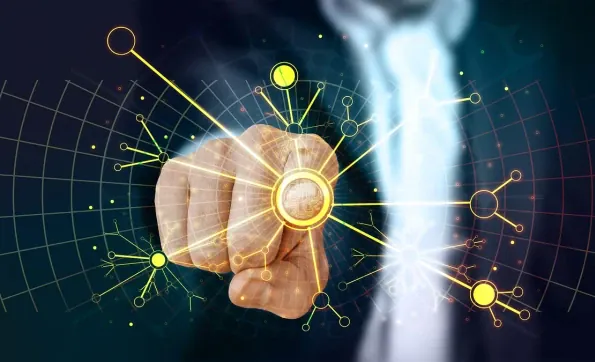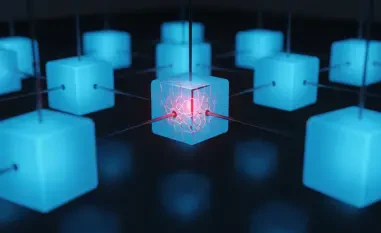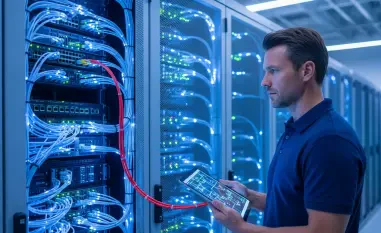As industrial control systems (ICS) grow in complexity and interconnectedness, traditional network security frameworks are increasingly insufficient to counteract contemporary cyber threats. The progressive integration of artificial intelligence (AI) is revolutionizing industrial cybersecurity, bringing significant improvements and innovations to safeguard industrial processes.
The Criticality of Cybersecurity in Industrial Operations
Rising Cyber Threats in the Industrial Sector
With the rapid expansion of the Internet of Things (IoT) across various sectors, particularly in industrial applications, AI-driven cybersecurity solutions have become imperative. The U.S. Department of Energy’s Better Buildings Solution Center reports that 34% of all cyberattacks target the manufacturing sector, and a staggering 95% of these breaches are preventable with minor security updates. The industrial sector’s critical role in the global economy makes it particularly vulnerable to cybersecurity risks, which can severely disrupt supply chains, inflict substantial financial losses, and tarnish reputations.
The integration of AI into cybersecurity in manufacturing industries provides a significant advantage. AI solutions are capable of proactively identifying potential threats, crafting a timely response, and mitigating associated risks. As hackers continually refine their attack methodologies, AI’s ability to analyze vast quantities of real-time data becomes crucial in staying ahead of threats. This proactive approach is essential for maintaining operational integrity and resilience against potential cybersecurity incidents, ensuring continuous protection for critical industrial operations.
Vulnerabilities and the Need for AI Solutions
More alarmingly, hackers may gain control over ICS, which are vital to operational infrastructure and services. Despite the effectiveness of AI cybersecurity measures, their adoption in the industrial sector is not yet widespread. Nevertheless, new IRS reporting criteria for Research & Development (R&D) Tax Credits aim to streamline and encourage innovation. By limiting qualifying research expenditures to 80% and focusing on 50 business components, companies implementing AI-driven cybersecurity can save time and resources when applying for the R&D Tax Credit, promoting further adoption and advancement of such technologies.
Implementing AI in cybersecurity for industrial operations not only enhances protection but also opens avenues for comprehensive threat management. AI’s ability to detect and neutralize sophisticated cyber threats enables companies to handle risks preemptively. The new reporting criteria for R&D Tax Credits provide the necessary financial incentives, encouraging businesses to innovate and integrate AI technologies into their security frameworks. This strategic move supports the adoption of advanced security solutions, thereby strengthening the overall cybersecurity posture of the industrial sector.
Integrating AI into Industrial Cybersecurity
Threat Detection
Traditional security measures rely on static rules and patterns to prevent cyber threats, rendering them less effective against evolving hacker tactics and vulnerabilities. AI, on the other hand, excels at collecting and synthesizing vast quantities of data to identify patterns indicative of breaches. Machine learning (ML) algorithms, in particular, are crucial for threat detection, as they analyze historical data to predict potential network intrusions. Information technology (IT) and security analysts can then leverage this data to assess risks and develop robust preventive strategies.
The dynamic nature of AI threat detection offers a significant advantage over conventional methods. By continuously learning from past data and recognizing new patterns of attacks, AI systems can rapidly respond to emerging threats. This capability is vital for ensuring that security measures remain relevant and effective in the face of ever-changing cyber threats. As a result, industrial operations can protect their critical infrastructure more effectively, reducing the risks associated with cyber intrusions and maintaining the integrity of their processes.
Real-Time Automated Analysis
AI solutions aggregate large sets of information in real-time. Advanced algorithms analyze network traffic, operations, and online behaviors as they occur, enabling cybersecurity professionals to detect attacks almost instantaneously. These algorithms can also isolate breached systems, contain threats, and activate automated responses to mitigate issues without human intervention, aligning with the goals of Industry 4.0. The industrial Internet of Things (IIoT) aims to automate the entire supply chain using AI-powered tools, including security, to ensure more efficient operations and minimize downtime.
The efficiency of AI in real-time analysis extends beyond merely identifying threats. It provides actionable insights that can aid in refining strategies for preventing future incidents. Through continuous monitoring and instant responses, AI can isolate malicious activities before they escalate, ensuring minimal impact on industrial operations. This level of proactive security is crucial for maintaining uninterrupted functionality and could lead to significant operational efficiencies, safeguarding critical assets from potential cyber risks.
User Behavior Analytics and Authentication
Monitoring Insider Threats
Insider attacks, where individuals with legitimate network access become threats, have risen from 66% to 76% between 2019 and 2024, according to a study by Cybersecurity Insiders commissioned by Securonix. The industrial sector has deployed AI to monitor user behaviors and detect anomalies. By establishing a baseline reference, AI algorithms can identify variations that suggest insider threats or unauthorized access.
The rise in insider threats highlights the need for advanced monitoring solutions. AI systems can provide continuous surveillance, ensuring that any deviation from standard user behavior is flagged for further investigation. By identifying these anomalies early, companies can take preemptive measures to prevent potential breaches, protecting sensitive information and maintaining the integrity of their systems. This approach is vital in an environment where internal risks are just as significant as external threats.
Kill Chain Approach
Security analysts utilize a “kill chain” approach to automate threat detection, looking for atypical user actions even when the exact risk is unknown. This methodology also helps identify security gaps, allowing for necessary adjustments. By continuously monitoring and analyzing user behavior, AI systems can provide early warnings and prevent potential breaches before they escalate.
The application of the kill chain approach within AI systems ensures a comprehensive threat management strategy. By breaking down the stages of potential cyberattacks and identifying anomalies at each stage, AI can address threats before they become critical. This method not only improves detection rates but also provides the necessary insight to fortify security protocols continuously. As a result, the industrial sector can proactively defend against both known and unknown threats, enhancing overall cybersecurity resilience.
Automated Response
Speed and Efficiency
AI automation can respond to cyber threats post-detection and analysis, often faster than human experts. This technological advancement in AI R&D reduces the typical response time of conventional security measures, allowing teams to focus on more critical incidents. While automation tools enhance efficiency, they do not entirely replace human intervention.
AI’s ability to provide rapid responses ensures that threats are contained swiftly, minimizing potential damage. Automation allows for the immediate execution of predefined countermeasures, ensuring a swift reaction time that is essential in preventing the escalation of cyber incidents. The efficiency gained from AI-driven responses enables security teams to allocate their resources more effectively, focusing on strategic areas that require human expertise and judgment.
Balancing Automation and Human Expertise
Instead, the industrial sector must find a balance between manual and AI-driven cybersecurity to ensure comprehensive understanding and informed decision-making. By leveraging AI for routine tasks and initial threat responses, human experts can dedicate their efforts to complex and high-priority security challenges, enhancing overall cybersecurity resilience.
Striking the right balance between automation and human oversight is essential for maintaining robust cybersecurity. While AI can handle repetitive and time-sensitive tasks, human experts bring critical thinking and situational awareness that AI lacks. This synergy ensures that the strengths of both AI and human capabilities are maximized, providing a comprehensive defense mechanism that adapts to evolving threats and maintains a high level of security across industrial operations.
Challenges and Best Practices for AI Cybersecurity Deployment
Addressing AI Vulnerabilities
Implementing AI cybersecurity solutions on a broader scale presents several challenges for industrial operations. One significant concern is AI’s vulnerability to cyberattacks, akin to the systems it protects. Compatibility issues with existing security measures can further complicate integration efforts. Given the substantial volume of data and the complexity of modern networks, AI security developments must be highly dynamic to accommodate these factors effectively.
AI systems must be designed with robust security protocols to mitigate the risk of cyberattacks targeting AI itself. Ensuring compatibility with existing infrastructure is critical so that AI solutions can be seamlessly integrated without creating additional vulnerabilities. Adaptability and scalability are essential characteristics for AI in the cybersecurity realm, enabling systems to handle large volumes of data and complex network structures efficiently, maintaining relevance and effectiveness in diverse operational environments.
Ensuring Compliance and Workforce Upskilling
As industrial control systems (ICS) evolve, they become much more complex and interconnected, leading to vulnerabilities that traditional network security frameworks can no longer adequately address. The rising sophistication and frequency of cyber threats necessitate a robust approach to safeguarding industrial operations. The integration of artificial intelligence (AI) into industrial cybersecurity represents a transformative development in the sector. AI brings substantial advancements and innovative strategies to protect these critical systems from malicious activities. Unlike conventional security measures, AI can process vast amounts of data at incredible speeds, detect anomalies, and respond to threats in real-time. This proactive approach is crucial for preventing disruptions and protecting sensitive information. Moreover, AI’s ability to learn and adapt over time makes it an invaluable asset in anticipating future cyber threats and continuously strengthening an industrial control system’s defenses. The fusion of AI with industrial cybersecurity not only mitigates risks but also ensures the resilience and stability of industrial processes in the face of ever-evolving cyber challenges.













